
Although "furoshiki" may have a somewhat old-fashioned image even among Japanese people, it is actually lightweight, can be folded compactly, and is now being rediscovered as an eco-friendly bag or stylish wrapping material. Furoshiki, which may look like just a simple square piece of cloth, is a tool with a long history and tradition. With a little creativity, it becomes a versatile cloth that can make daily life more convenient. In this article, we will introduce the origin of the name "furoshiki" and some trivia, how to choose one by size and material, and where you can purchase them.
*If you purchase or reserve products introduced in this article, a portion of the sales may be returned to FUN! JAPAN.
What is Furoshiki? The Traditional Japanese Art of Transforming a Single Cloth into Wrapping, Carrying, and Decorating
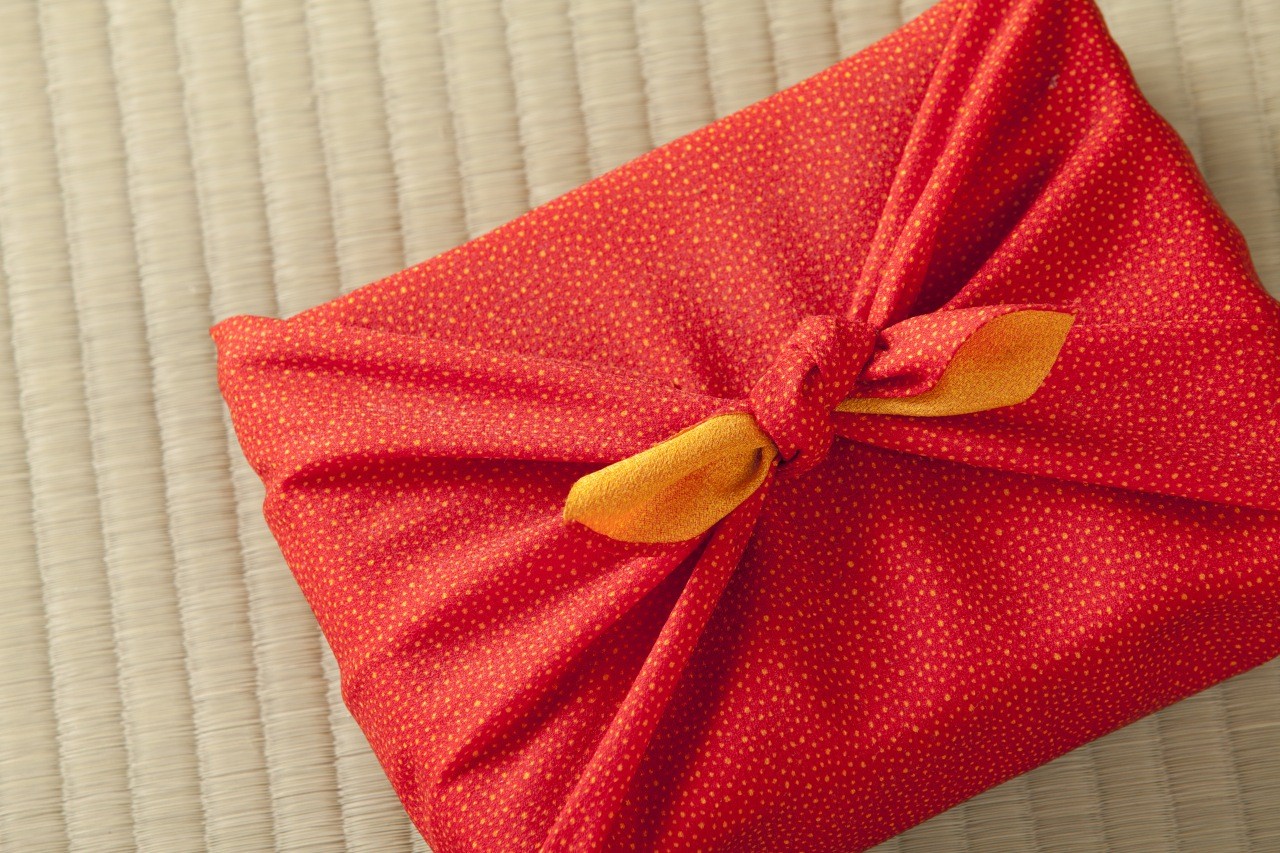
What is Furoshiki? What is it used for?
Until around 1955 to 1964, furoshiki was an essential household item used to wrap and tie up kimono or bedding like a bag, or to carry various items. It is said that most Japanese households kept about 20 furoshiki on hand. Nowadays, paper bags and handbags have become mainstream, so many people may not be familiar with furoshiki and may not know how to use them.
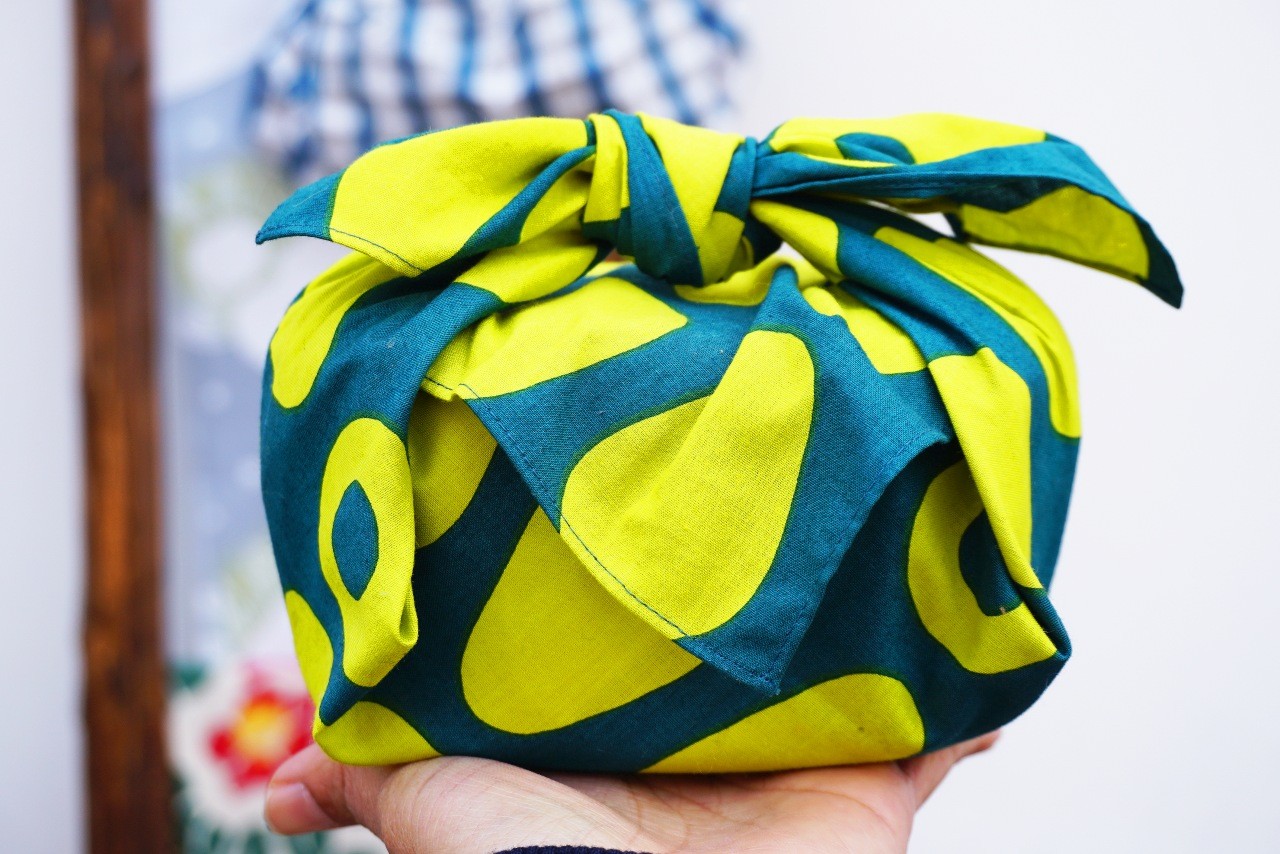
In fact, the cloth used to wrap a bento box, though small in size, is also a proper furoshiki. While dedicated bento bags and drawstring pouches are now mainstream, there are many advantages to wrapping a bento box with a furoshiki.
- You can carry your bento box while keeping it horizontally without tilting it.
- Wrapping bento box securely with cloth prevents the lid from opening.
- It protects the bento box from scratches.
- After untying, it can be used as a placemat.
- If it gets dirty, it can be used as a cleaning cloth.
- The act of wrapping expresses care for the bento (food), and wrapping it in a beautiful cloth makes lunchtime even more enjoyable.
Besides wrapping bento boxes, there are many other ways to use furoshiki.

- As a bag: Depending on how you tie it, it can be transformed into various types of bags, so the possibilities are endless.
- As wrapping: Unlike paper wrapping, which tears easily, cloth does not tear and produces no waste. Since you do not need ribbons or tape for decoration, it is an even more eco-friendly way to wrap gifts.
- For carrying or storing items: When transporting bedding or clothing, you do not need large cardboard boxes or storage cases. It can also be used for storage.
- As a placemat or tablecloth: Simply laying it out creates a stylish space. It is also recommended for outdoor use.
- As interior decoration: Besides using it as a sofa or cushion cover, it can also be hung on the wall. Especially if you frame a furoshiki with a Japanese-style pattern, it becomes a wonderful piece of interior decor. Some FUN! JAPAN staff also use them as wall hangings to decorate their rooms.
- As a scarf or stole: You can drape it over your knees or wrap it around your neck when it is cold. It is a recommended item for outdoor activities or travel.
The author personally uses a reversible furoshiki with a Japanese pattern. I use it to organize clothes in my suitcase when traveling, and I like that I can change the way I wrap it depending on the size of the clothes, which helps prevent wrinkles and allows for good ventilation. Since it is reversible, I can change the pattern according to my mood, making it a comforting item when traveling.
Why is it gaining attention again? The appeal of furoshiki as an eco-bag and souvenir
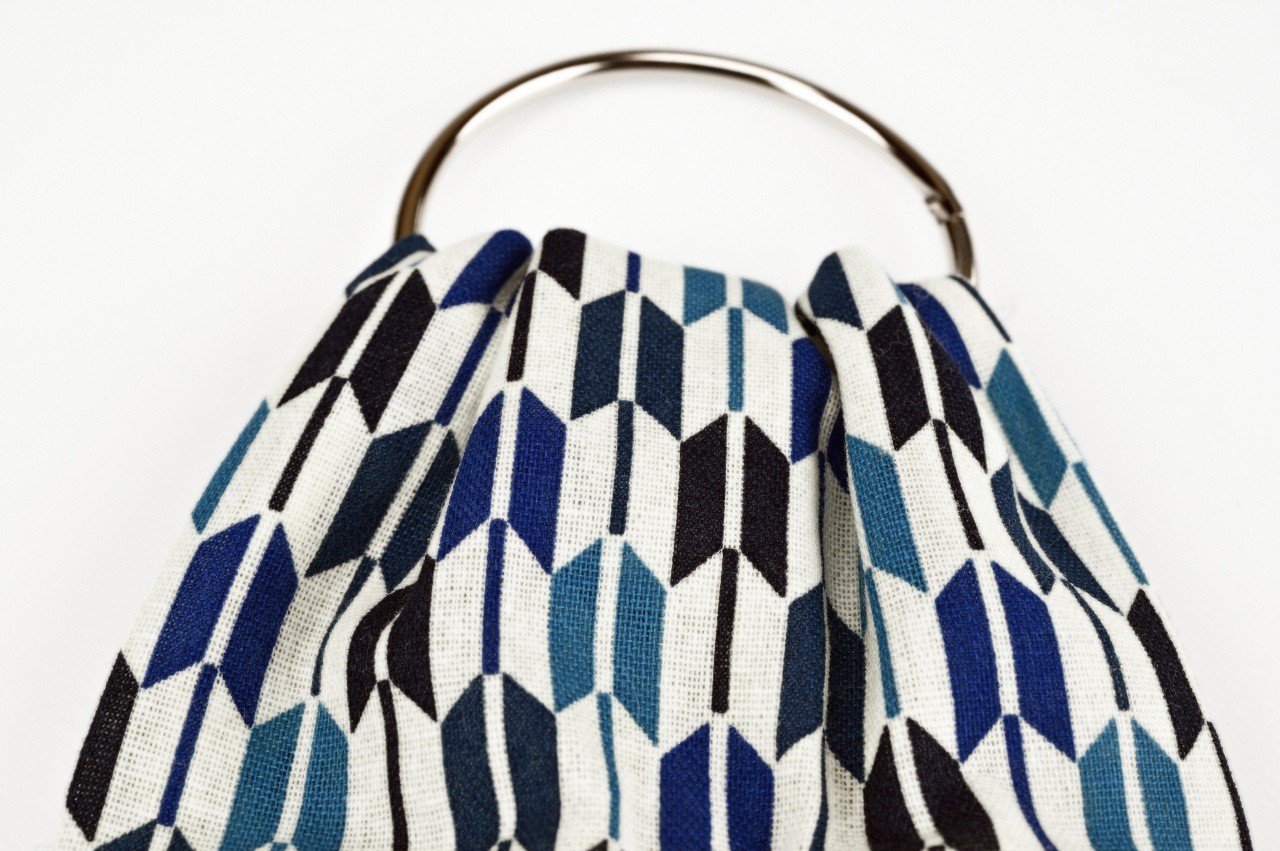
Furoshiki, which can be used repeatedly and to wrap a variety of items, has recently been attracting attention from an ecological perspective. Since it does not become waste and can be folded up small and light, it is also convenient to carry around. For this reason, it is recommended as a souvenir when visiting Japan, or as a way to wrap purchased souvenirs and give the furoshiki itself as a gift. There is also the fun of choosing a piece that suits your own taste from a wide range of designs (vivid patterns, traditional Japanese motifs, modern styles) and types of fabric.
The Culture and History of Furoshiki You Should Know
Origin of the Name
The use of cloths similar to furoshiki dates back more than 1,200 years. The name "furoshiki" became established during the Muromachi period (1338–1573), when Shogun Ashikaga Yoshimitsu built the Ōyudono*1, and feudal lords used cloths to wrap their removed kimono or to sit on and tidy themselves after bathing (the bathtub is call "風呂" furo). The cloths spread out in the bath came to be called "furoshiki," and eventually, cloths used for wrapping items also came to be known by this name. As the name suggests, "furoshiki" comes from the practice of spreading cloths in the bath.
In the Edo period, public baths became popular among common people, and people would wrap their bathing items in furoshiki to take to the bathhouse. It also became customary to add a family crest to the furoshiki so that one's belongings could be easily identified.
*1 Ōyudono (大湯殿): A type of steam bath, similar to a modern sauna.
Trivia
In Japanese, there are also idioms that use the word "furoshiki."
"Ōfuroshiki o hirogeru" (literally, "to spread out a big furoshiki") is a Japanese idiom meaning "to make grand plans that are unlikely to be realized" or "to exaggerate small things." The origin of this phrase is related to the furoshiki, which has been used as a tool for business since the Edo period. Long ago, a merchant who had become poor after failing in business tried to borrow money, but no one would trust him. So, he went out of his way to make a large furoshiki (ōfuroshiki) and distributed it to people to show off, which earned him trust and allowed him to borrow money. From this story, the expression "ōfuroshiki o hirogeru" came to mean "to act in an exaggerated manner beyond one's actual ability."
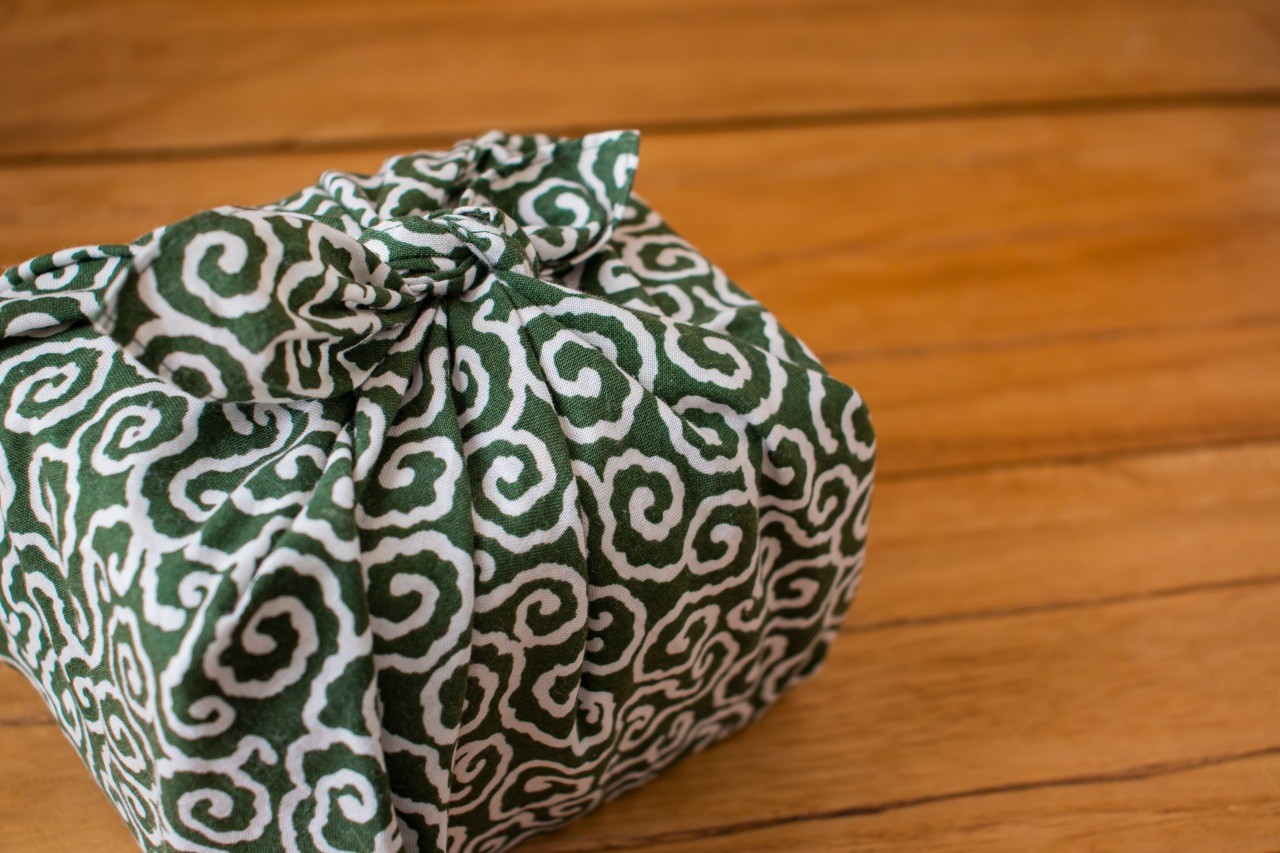
By the way, when you think of furoshiki, do you picture a thief carrying a furoshiki with a karakusa (arabesque) pattern, as often seen in Edo period dramas? The karakusa pattern is considered very auspicious, symbolizing longevity, long life, and prosperity of descendants, so it was a popular design and mass-produced at the time. As a result, the general image of "furoshiki means karakusa pattern" became established, and since "everyone was using them," it is said that even thieves could use them without arousing suspicion. This reflects the social atmosphere of the time in a humorous way.
Did you also know that professionals such as lawyers and prosecutors, who conduct trials, used to frequently use furoshiki? Carrying items in a furoshiki was a long-standing tradition. The reason is that they often had to carry large amounts of materials, such as thick law books like the Compendium of Laws. These items would not fit in a bag, and using a bag would make them even heavier, but the furoshiki, which could wrap items regardless of their shape or size and was light and compact, solved this problem. Furthermore, after submitting documents to the court, the furoshiki could be folded and put in a pocket, allowing them to return empty-handed, which was another reason for its popularity. Even in modern courtroom dramas, furoshiki sometimes make an appearance.
Furoshiki Shopping Guide: How to Choose the Right Size, Material, and Pattern, and Where to Buy
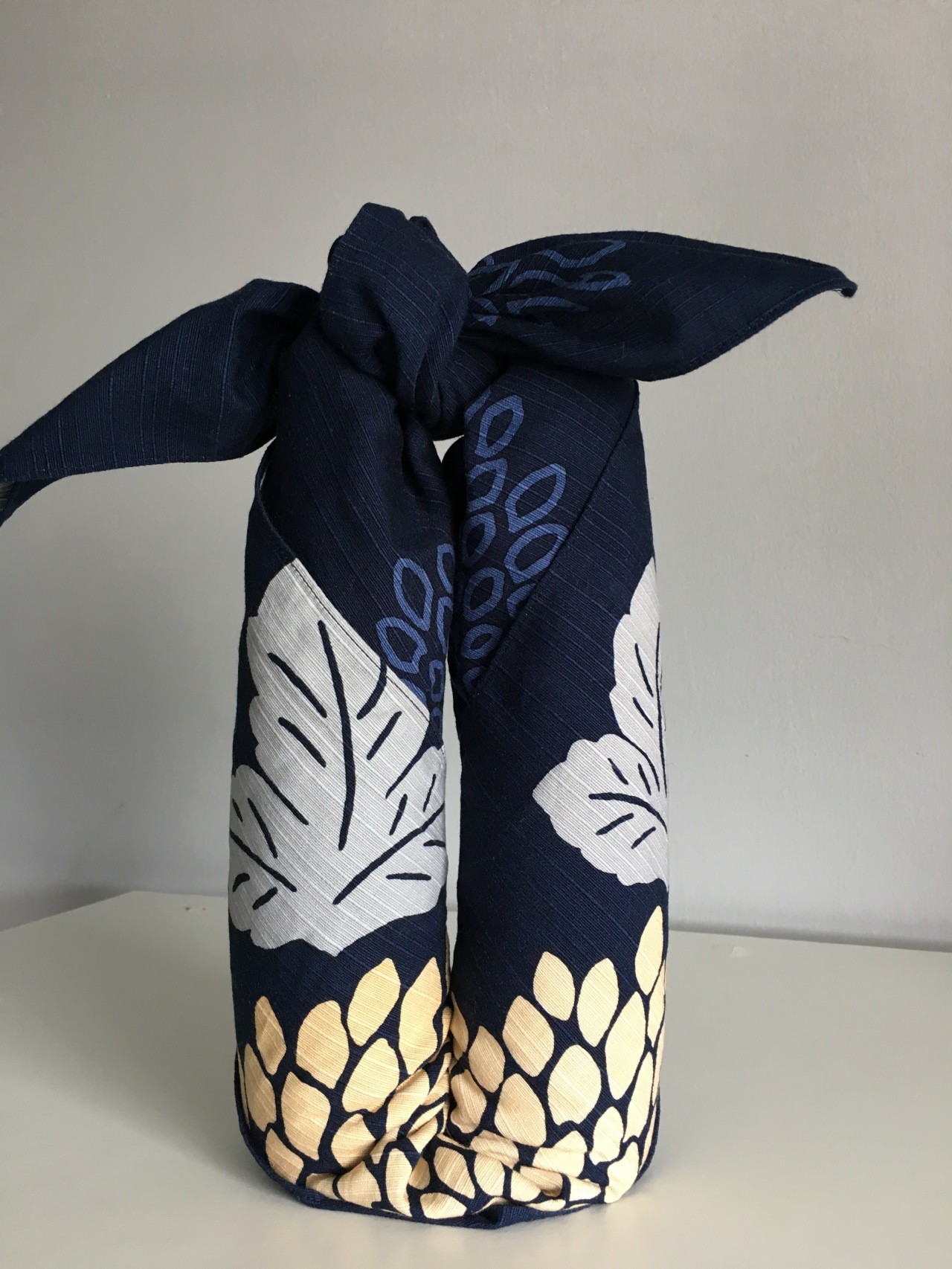
Sizes and Uses
| Size | Use |
| 中巾 (Chuhaba) (approx. 45cm) | Wrapping gift envelopes or small items |
| 尺三巾 (Shakumihaba) (approx. 50cm) | Wrapping lunch boxes, tissue boxes, or for interior decoration |
| 二巾 (Futahaba) (approx. 68cm) | Wrapping boxed sweets or a single wine bottle |
| 二尺巾 (Nishakuhaba) (approx. 75cm) | Wrapping boxed sweets |
| 二四巾 (Nishihaba) (approx. 90cm) | Tied as a bag, wall hanging, or noren curtain |
| 三巾 (Mihaba) (approx. 105cm) | Tablecloth, wrapping clothing, or carrying large items |
| 六巾 (Muhaba) (approx. 205cm) | Wrapping a set of bedding or as a sofa cover |
| 七巾 (Nanahaba) (approx. 238cm) | Wrapping moving boxes, the largest size available |
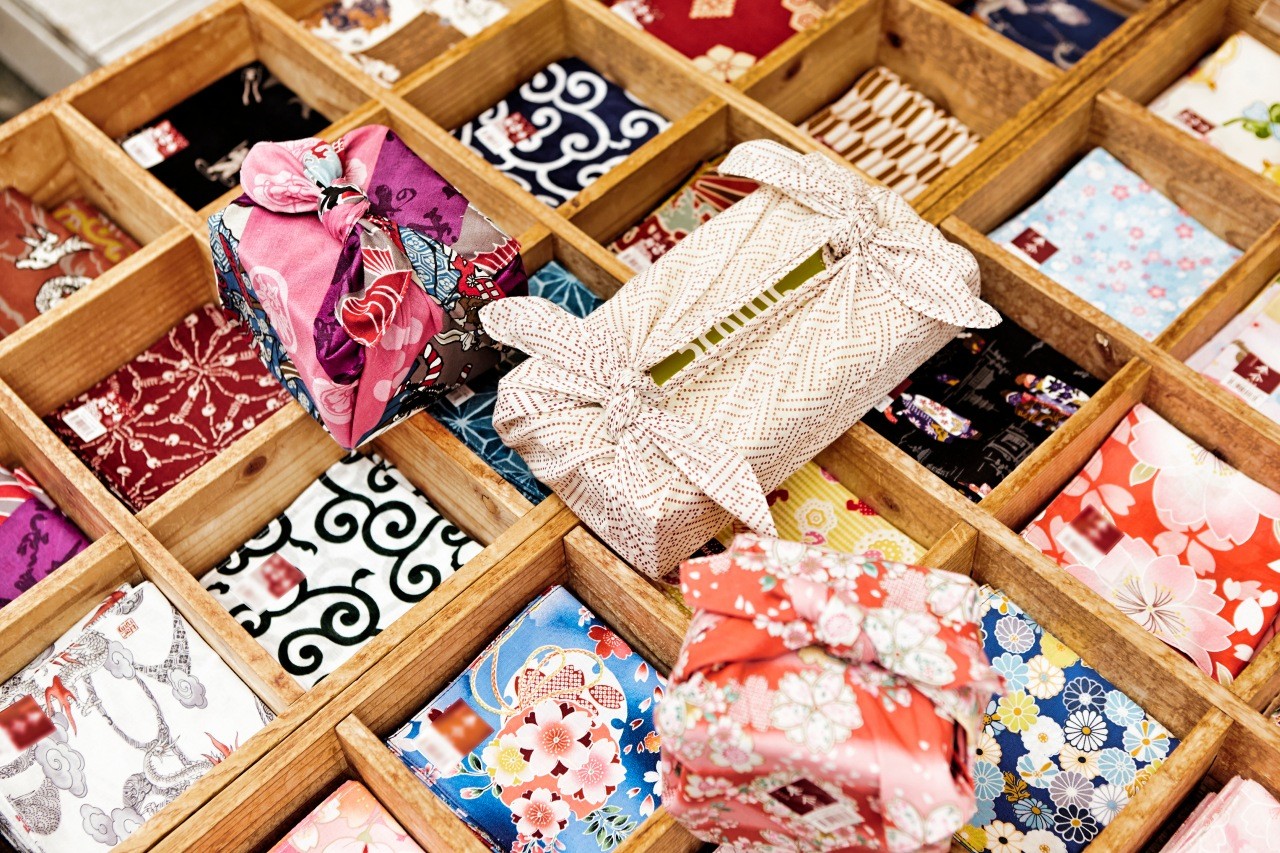
How to Choose Patterns, Colors, and Materials
Color
| Color | Use |
| Purple | A color traditionally worn by nobility. It has an elegant image and symbolizes longevity. Used to express joy or gratitude when giving gifts, and also suitable for all occasions including funerals. |
| Red / Pink | Colors suitable for celebratory occasions such as weddings. Their bright image conveys feelings of happiness to the recipient. |
| Blue / Indigo / Navy | Familiar colors for everyday use, also used to express condolences at funerals and similar occasions. |
| Green | A color suitable for funerals. Uguisu (bush warbler) green and Rikyu green were popular colors during the Edo period. |
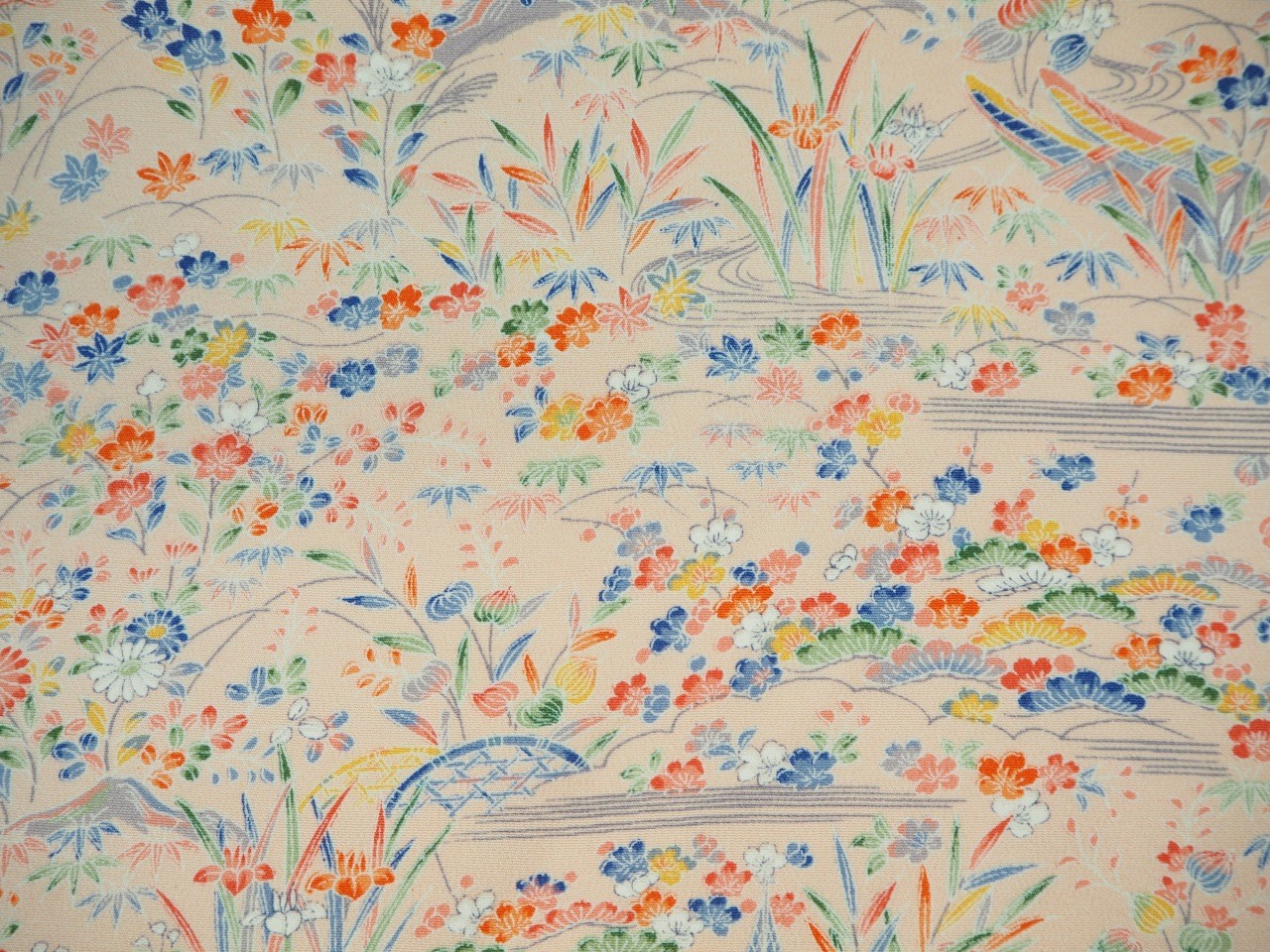
Furoshiki Patterns
| Pattern | Use |
| 松竹梅 (Shouchikubai): Pine, Bamboo, and Plum | A pattern suitable for celebratory occasions such as weddings |
| 鶴 (Tsuru): Crane | The most famous pattern. Depicts cranes stretching in all directions, symbolizing wishes for longevity and prosperity so that happiness continues forever |
| 花鳥風月 (Kachofugetsu): Flowers, Birds, Wind, and Moon | Designs expressing the scenery of Japan’s four seasons, plants, and nature throughout the year |
| 宝づくし (Takarazukushi): Auspicious Treasures | Patterns featuring collections of auspicious items. Eight treasures that bring happiness are scattered throughout the design. |
| 小紋 (Komon): Small Crests | Traditional patterns such as Asagata (hemp leaf) and Samekomon (sharkskin), which were used for samurai hakama during the Edo period |
Furoshiki Materials
| Material | Use |
| Silk | Has an elegant sheen, used for formal occasions such as weddings and funerals, or for wrapping gifts for superiors. As it is a delicate material, dry cleaning is recommended for care. |
| Cotton | A familiar material. Durable and easy to handle. Ideal for casually wrapping everyday items. Does not stretch or shrink, so it can be washed in a washing machine. Be careful with dryers as the fabric may shrink. |
Synthetic Fibers (Rayon, Nylon, Polyester) | Durable and easy to handle. Useful for waterproofing against rain and similar situations. |
Where Can You Buy Them?
| Type of Store | Type of Furoshiki | Where to Buy |
| Specialty Stores / Traditional Craft Shops | High-quality items, traditional designs, or furoshiki made from special materials | Furoshiki specialty stores, Japanese accessories shops, kimono shops, Japanese goods sections in department stores, gift corners, etc. |
| Casual Purchase Locations | Casual designs for everyday use or small furoshiki for wrapping lunch boxes | General goods stores, lifestyle shops, souvenir shops, gift shops at tourist spots, large supermarkets, home centers, etc. |
| Online Stores | Wide variety available, can choose products from manufacturers nationwide | Online shops of specialty stores, Yahoo! Shopping, etc. |
| Museum and Art Museum Shops | Original designs matching the exhibition themes, or unique furoshiki featuring collaborations with artists | Museum shops |
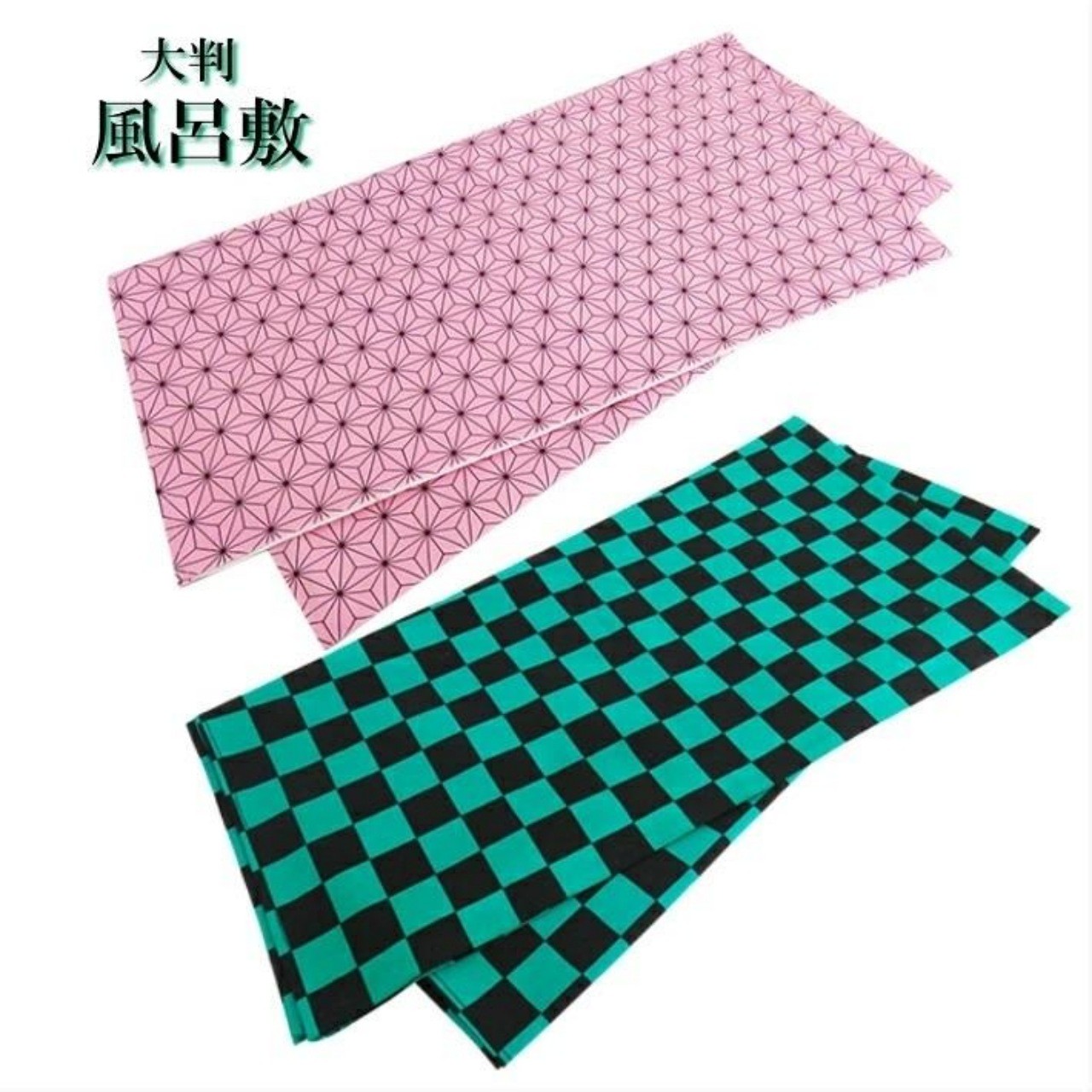
👉Purchase on Yahoo! Shopping🌸Large Furoshiki, Checkered Pattern Green × Black, Checkered Hemp Leaf Pattern Pink
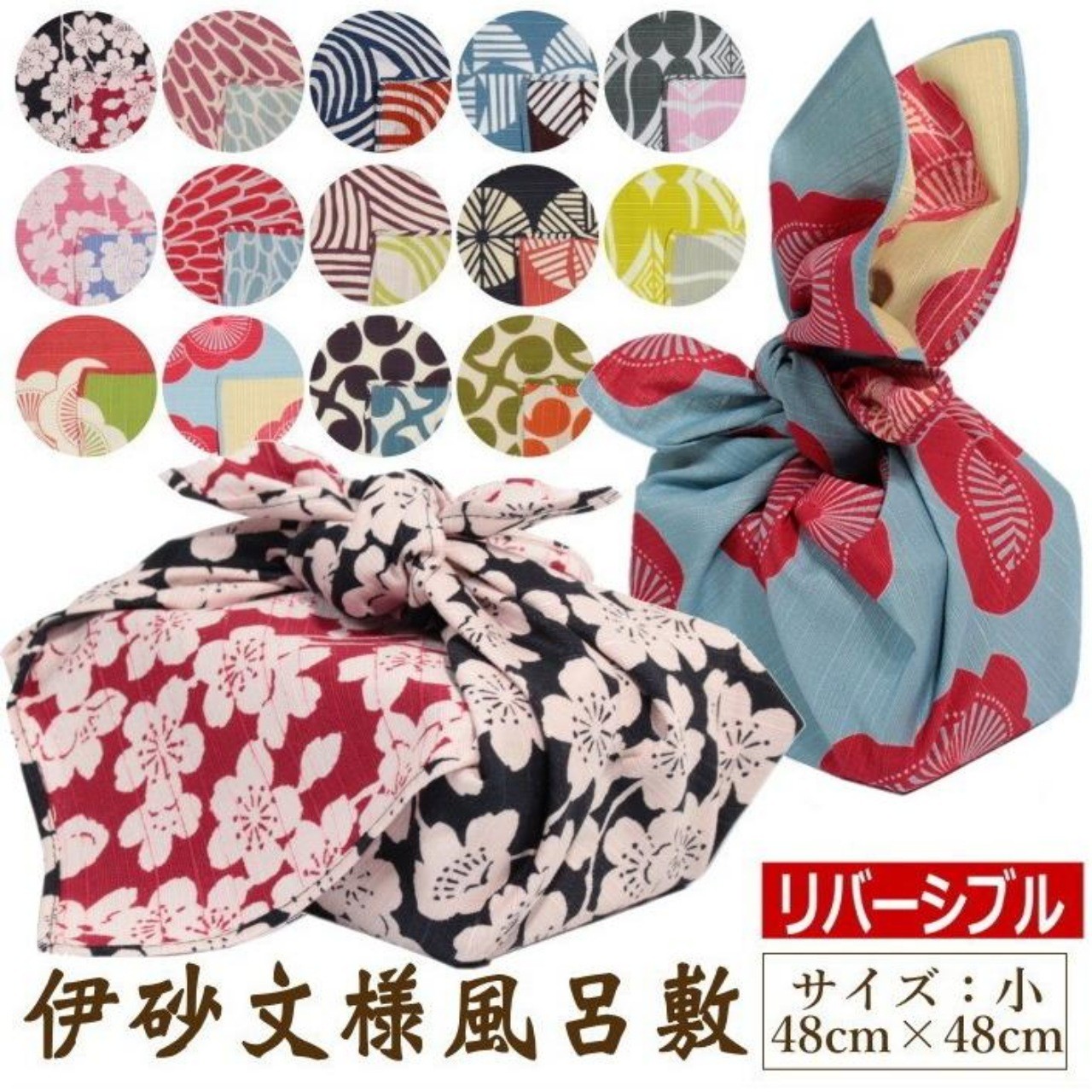
👉Purchase on Yahoo! Shopping🌸Reversible Furoshiki, Japanese Patterns
Practical Guide: How to Wrap a Furoshiki Bag You Can Use Today
How to Wrap with a Furoshiki
Here are some recommended ways to wrap with a furoshiki.
Tissue Box Wrap
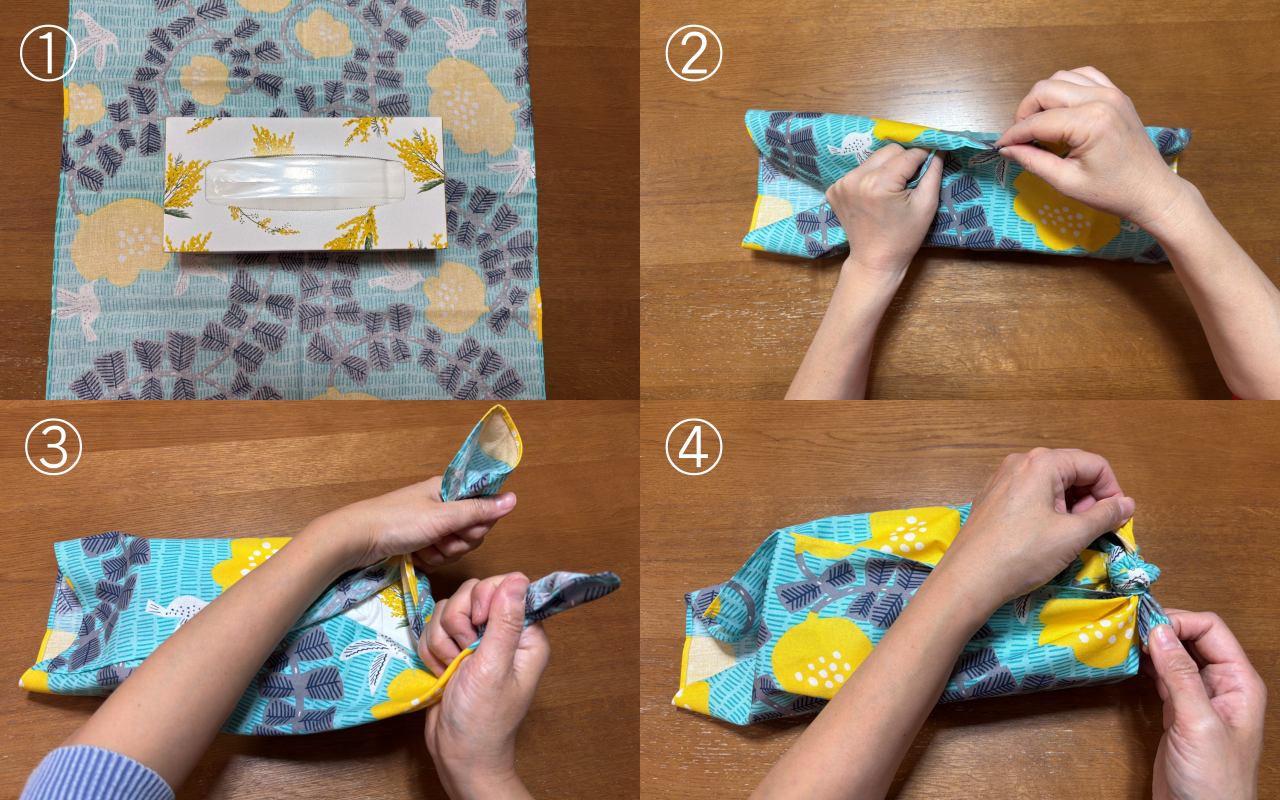
① Spread out furoshiki with the reverse side facing up then place the tissue box in the center
② Cover the tissue box with the far and near sides of the furoshiki
③ Hold both ends while fitting them snugly
④ Tie a square knot*2
*2 A square knot is made by tying two corners of the furoshiki together twice
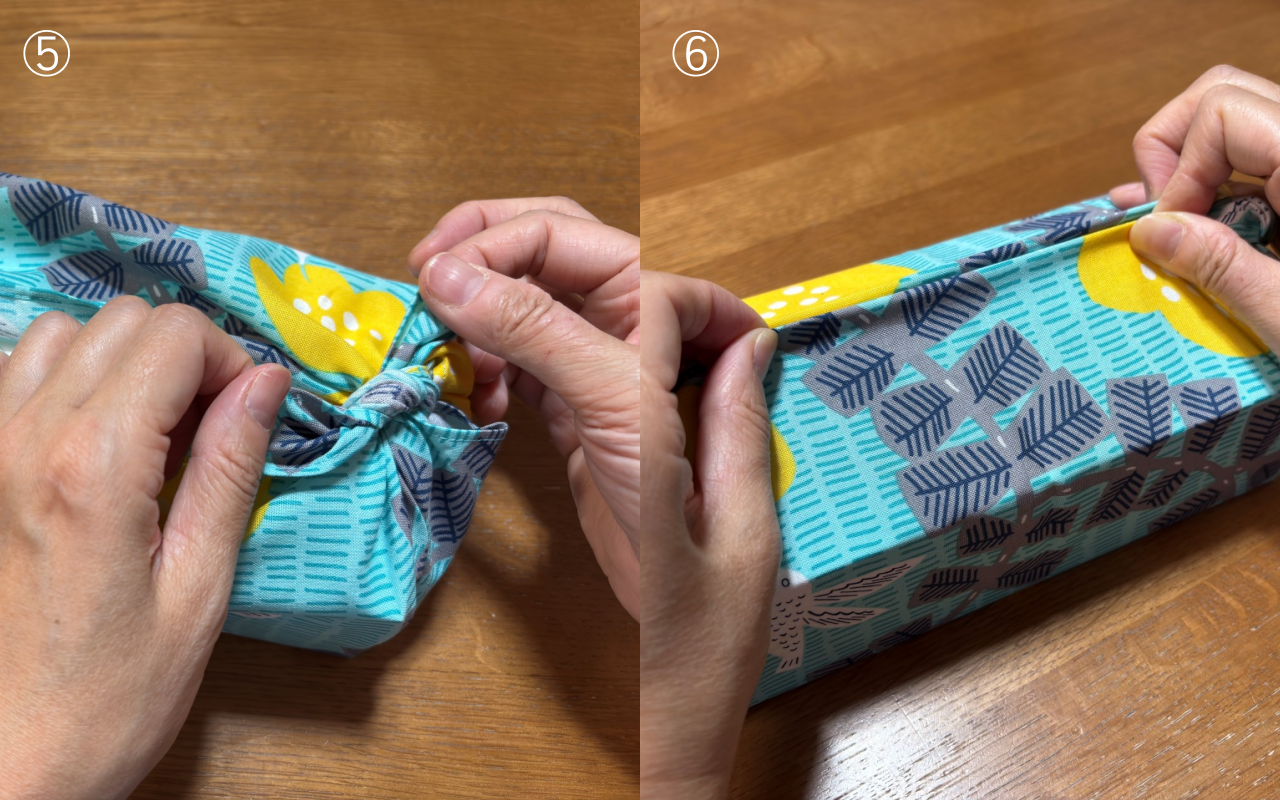
⑤ Tie a square knot on the opposite side in the same way
⑥ Shape up the opening and adjust the shape
Finished
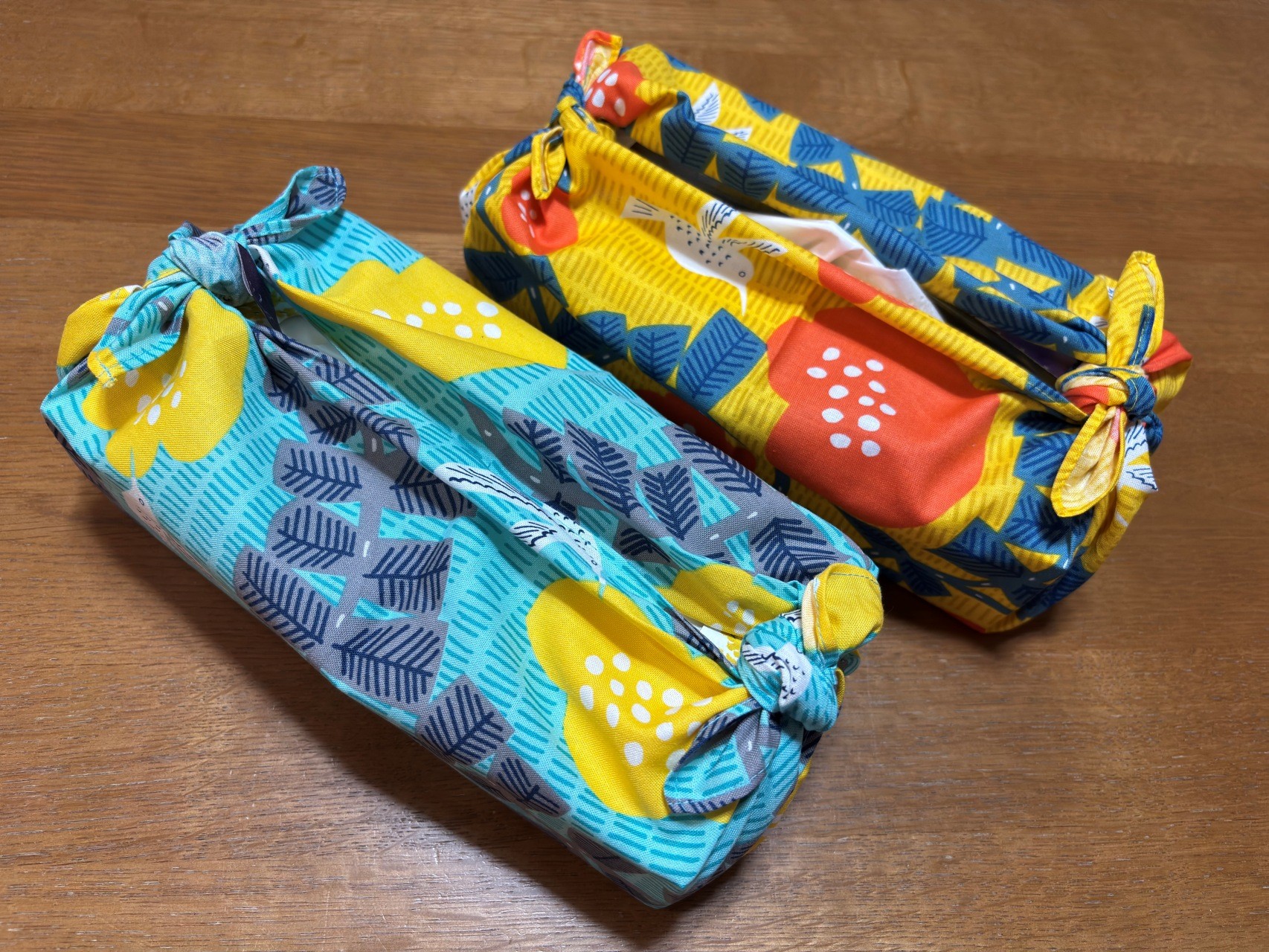
Bottle Wrap
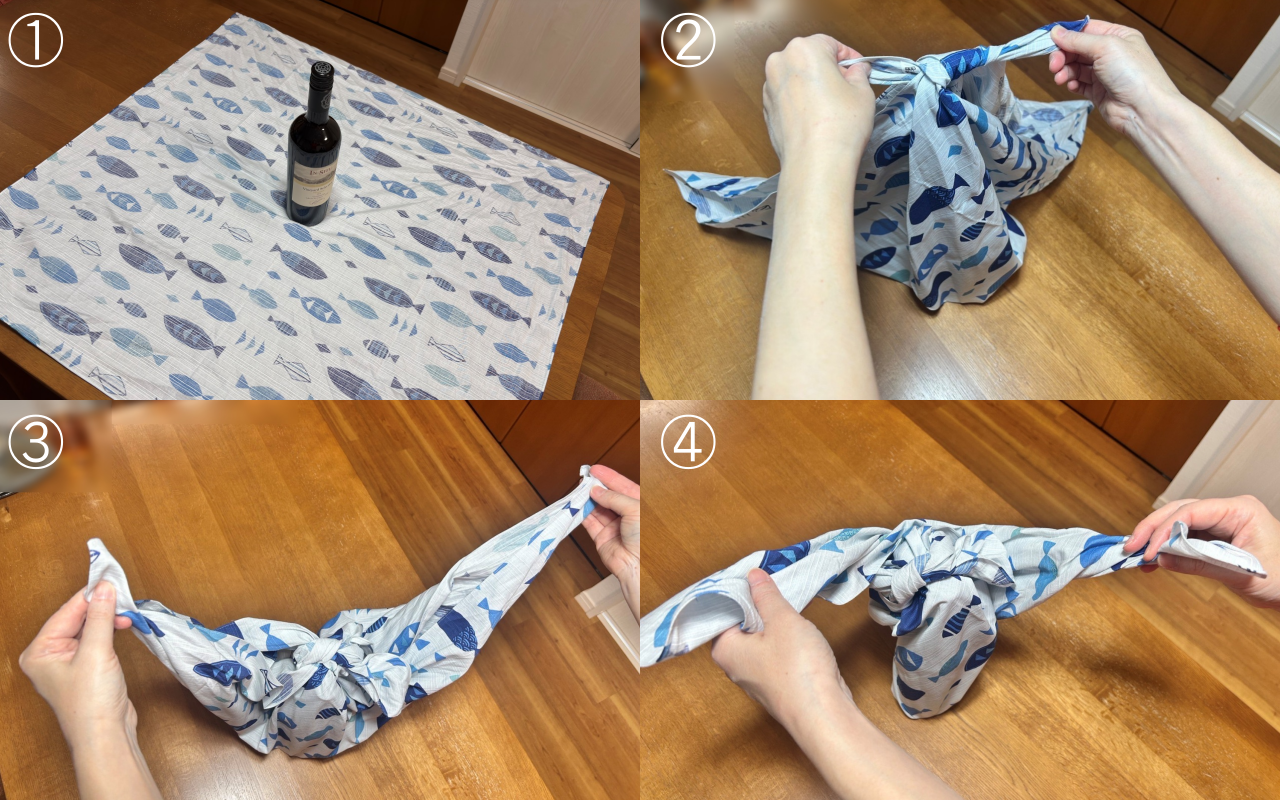
① Turn the furoshiki over, spread it diagonally, and place the bottle upright in the center
② Tie a square knot at the neck of the bottle with the near and far ends
③ Lift the left and right ends and bring them to the back
④ Cross them at the back

⑤ Lay the bottle down and twist the parts you are holding toward you with both hands
⑥ Tie the twisted parts in a square knot
⑦ Stand the bottle up and untie one knot at the neck made in step ②. Twist the untied part
⑧ Tie the twisted ends in a square knot to make a handle
Finished
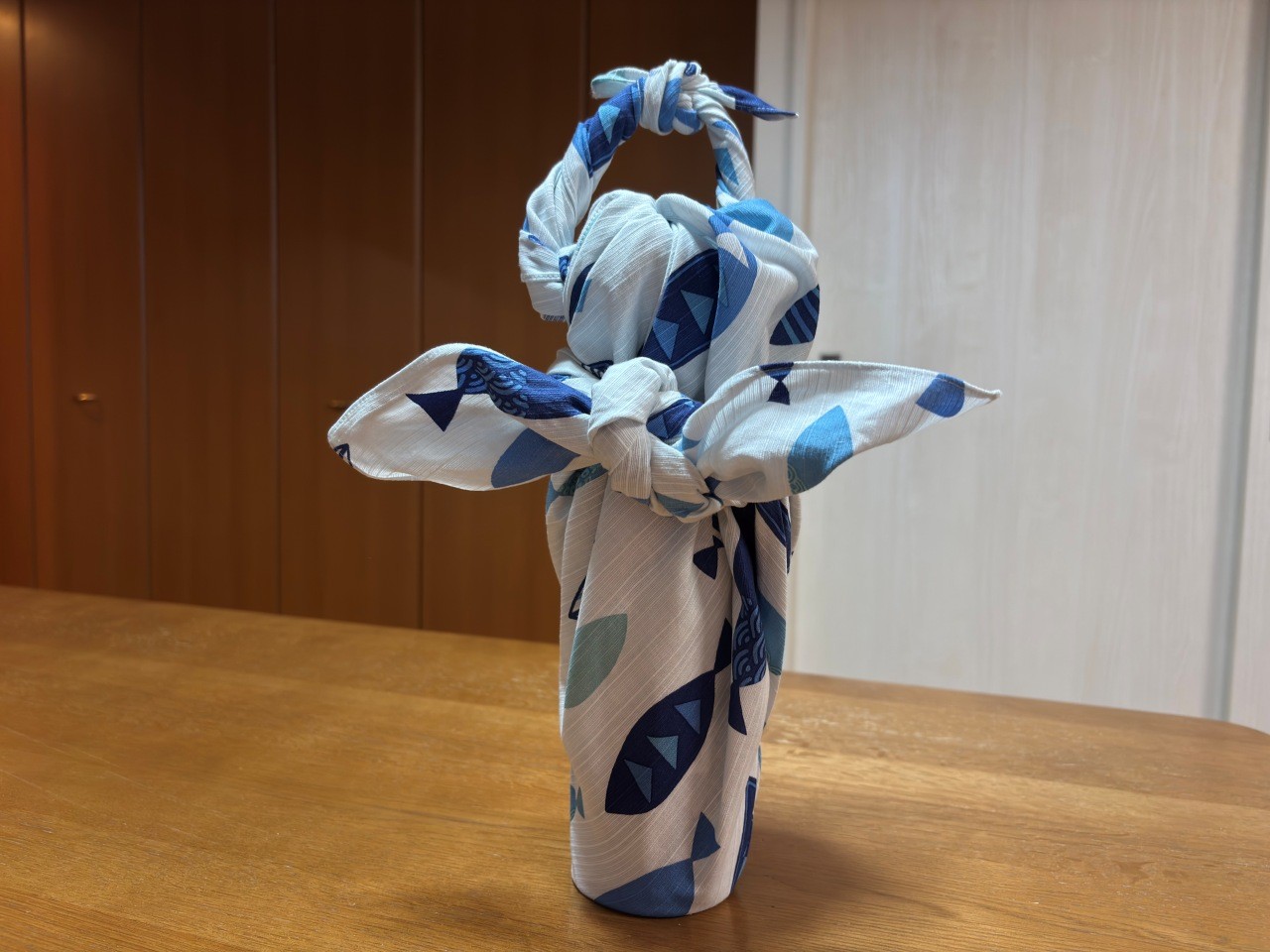
The Japanese Spirit Brought by Furoshiki
“Wrapping” means to treat things with care and handle them with sincerity. Wrapping a present is also a way to convey your feelings to the recipient. Why not use a furoshiki to share the gentle spirit of cherishing things and the wonderful culture of Japan?
References:
- Supervised by Miyai Co., Ltd., “Furoshiki Great Research Useful for Eco Life! Wisdom for Daily Life and Japanese Culture” 1st Edition,PHP Institute, 2005, 79 pages in total
- Furoshiki Musubi Online (Accessed 2025/11/05)
- Kyoto Shikisai (Accessed 2025/11/05)
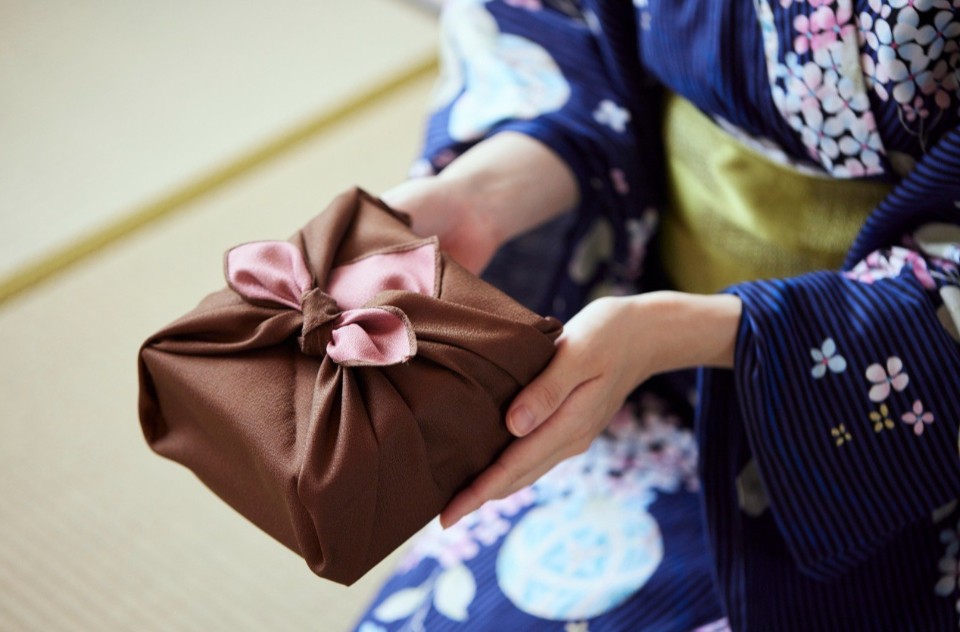
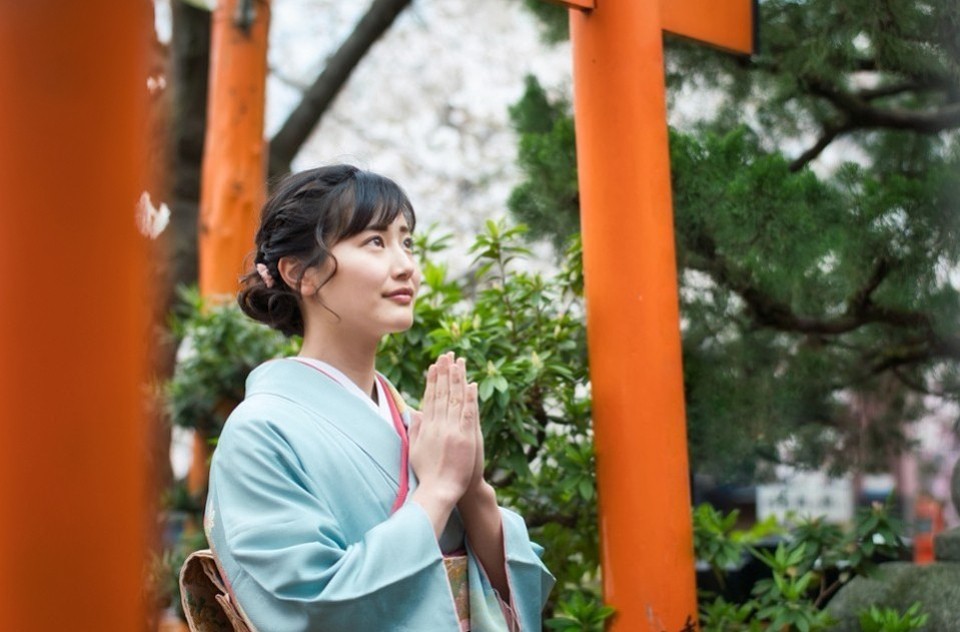
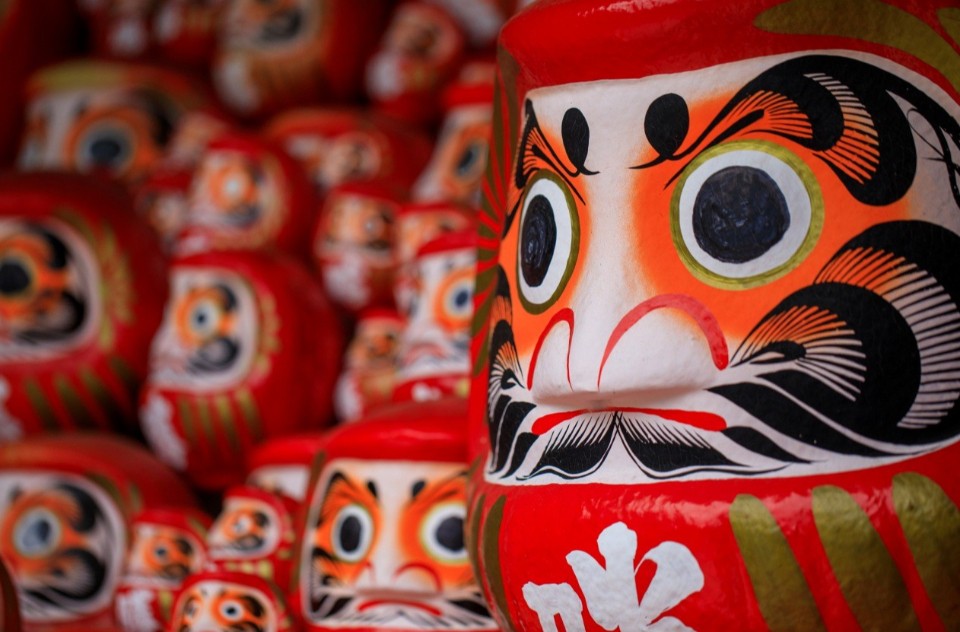
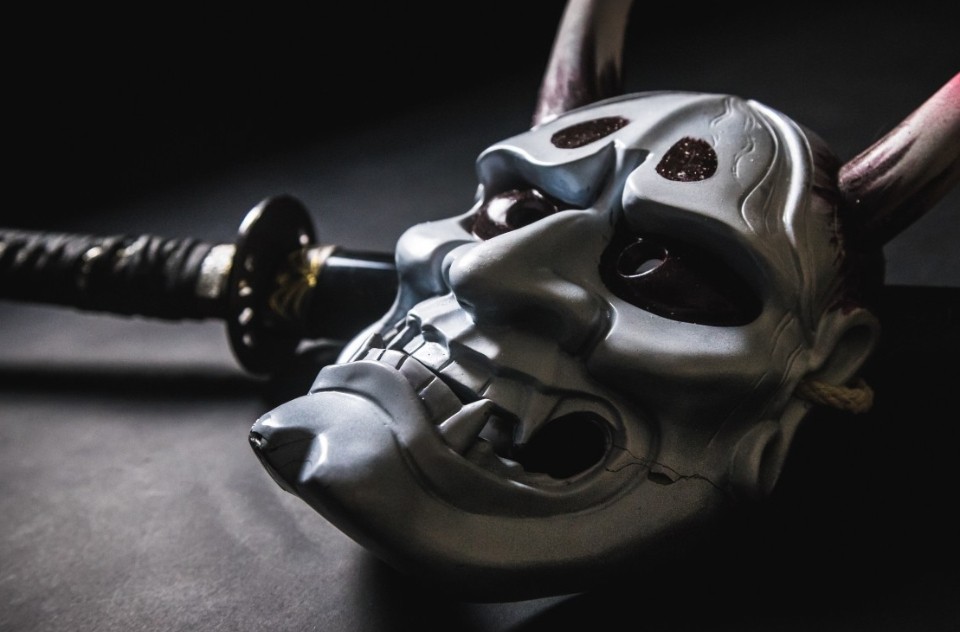
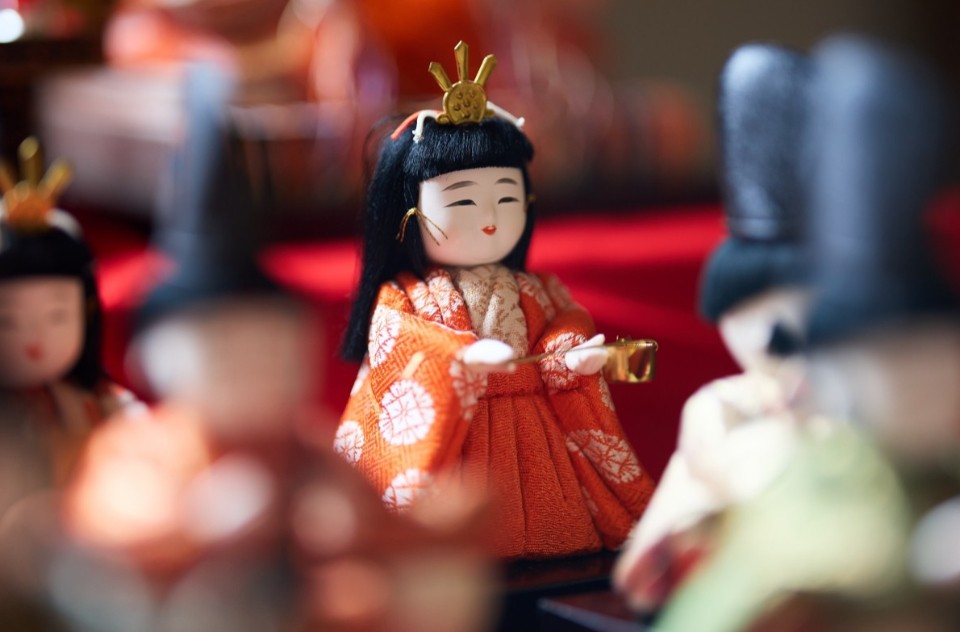
Comments